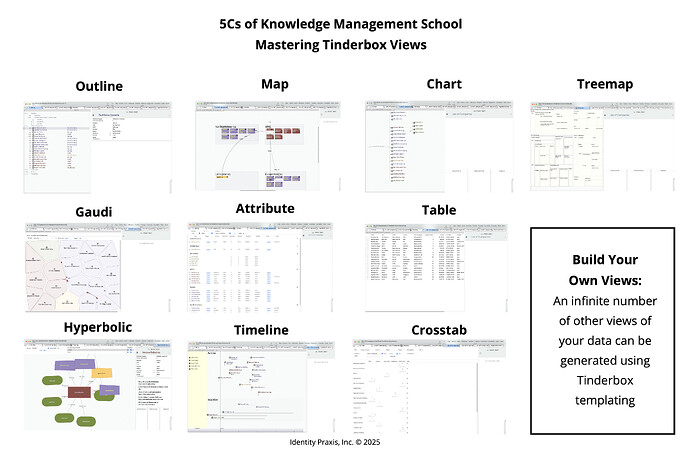Hello everyone,
I was an early user of Tinderbox back in Uni, just when Apple started with Mac OS X. It’s been a long time. (I wonder how generous the Eastgate’s “upgrade” policy is ![]() . That computer and the email associated with that uni account is long gone!)
. That computer and the email associated with that uni account is long gone!)
At the time I didn’t use Tinderbox “deeply” but I did enjoy what it afforded me at the time. I am refactoring my work process lately. And while I have always been helped by visual aids, I suffered an injury since those early Tinderbox days that has made visualizing things all the more important. Over the last year of refactoring things I had been looking for a more visual approach to my notes with greater and lesser success. I didn’t know Tinderbox was still around.
So while I know TB is a robust and odd piece of software, there is basically one thing I would “require” from it.
Ideally I could have a multiple containers and each would represent some sort of relationship among the notes within it. A note could live in any of those containers. I am aware TB supports aliases and some of the limitations of aliases. But what I ideally would like to be able to do is to query across any number of given containers to say, what notes do all the selected containers have in common and place those notes into a new container.
Then more ideally(!) once I see there is a meaningful relation among notes shared by various containers, any notes which would be so shared would land “automagically” into the container which describes that new relation.
Consider the containers sets and I am looking to find intersections among them. Then to programmatically to pull members of that intersection into the note which represents that intersection.
I hope this is clear. I have a tried a few other tools which get close but don’t really think of leveraging the container - note relationship well (Heptabase is so so close.)
I know a common suggestion is to check out the trial. I was always a slow learner and user of any new software; my injury made that all the more so. So even tho Eastgate provides a generous trial, it likely wouldn’t be sufficient for me to suss out all that I would like to test with my other tasks which sap my diminished cognitive capacity.
I appreciate the candor here on this board. And I said primitive above, I mean without the use of applescript or whatever to support such functionality.
If my legendary license allowed the $100 upgrade it would be easier to blindly test drive the software. But $300, not so much.
My post may be more error ridden than I wish. Before my TBI I had dyslexia. The TBI unfortunately didn’t cure it like in a cartoon, but further complicated it.
Thank you all for your help!
